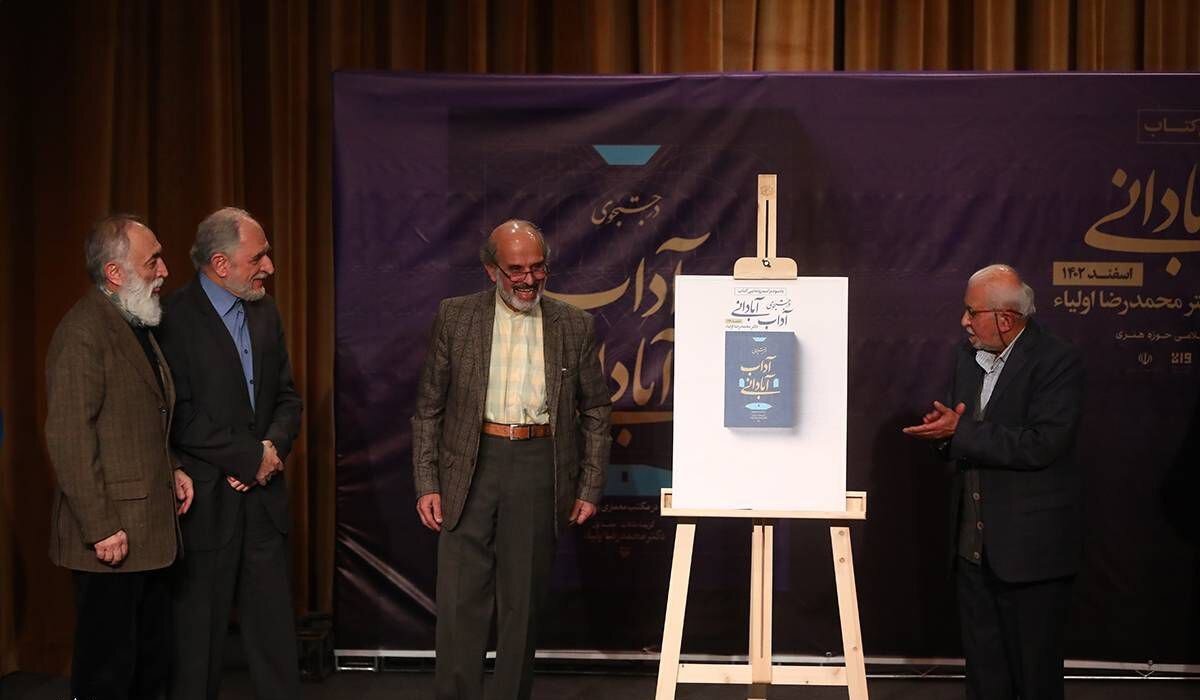Book on indigenous Iranian architecture unveiled in Tehran

TEHRAN- "In Search of Urban Etiquette," a book on the indigenous Yazd style of Iranian architecture was unveiled during a ceremony at the Iranian Academy of Arts in Tehran on Monday.
The ceremony was attended by Mohammadreza Olia, the author of the book, the Director-General of Culture and Islamic Guidance of Tehran Province Ali Foruzanfar, as well as several cultural officials, scholars, and architects.
Organized by the Islamic Architecture Center of the Art Bureau, the unveiling event aimed to pay tribute to Mohammadreza Olia, a renowned professor in the field of architecture and urban planning, and to introduce this valuable work to enthusiasts in the field.
Published by the Center for Islamic Architecture of the Artistic Field in collaboration with Sureh Mehr Publications, the book seeks to honor native knowledge and incorporate ideas from leading intellectuals while highlighting the School of Architecture in the central province of Yazd.
The 266-page book features a collection of articles by Mohammadreza Oulia, previously published between 1981 and 2001 in various journals, covering topics such as Iranian Islamic architecture, restoration, Islamic wisdom, and art. These articles have been compiled, edited, and published in this comprehensive volume.
Among the chapters included in the book are discussions on the art and traditional architecture of Yazd, historical works in Yazd, the bazaar of Yazd, Fahraj Jameh Mosque, and traditional ceramics and the ceramic industry. Additionally, the book explores topics such as the invocation and creation of space, denials in architecture and urban planning in Yazd, cultural heritage, the culture of protection, and the evolution of engineering systems over time.
This book serves as a valuable resource and reference for students of architecture and urban planning at all academic levels, as well as for architects, restoration experts, and managerial professionals in the field of architecture and urban planning.
Yazd's traditional architecture is a testament to its adaptation to the desert climate. The city's iconic wind catchers, known as badgirs, are tall structures designed to capture and cool desert breezes, providing natural ventilation for interior spaces. These ancient cooling systems have been a defining feature of Yazd's skyline for centuries, showcasing the city's ingenuity in responding to its harsh environment.
The use of adobe, a sustainable building material made from mud, straw, and water, is another key characteristic of Yazd's traditional architecture. The thick adobe walls of buildings provide insulation against the extreme temperatures of the desert, helping to regulate interior temperatures and create a comfortable living environment.
In addition to its functional features, Yazd's traditional architecture is marked by intricate tile work, decorative motifs, and ornate detailing that showcase the region's rich artistic heritage.
SAB/
Leave a Comment